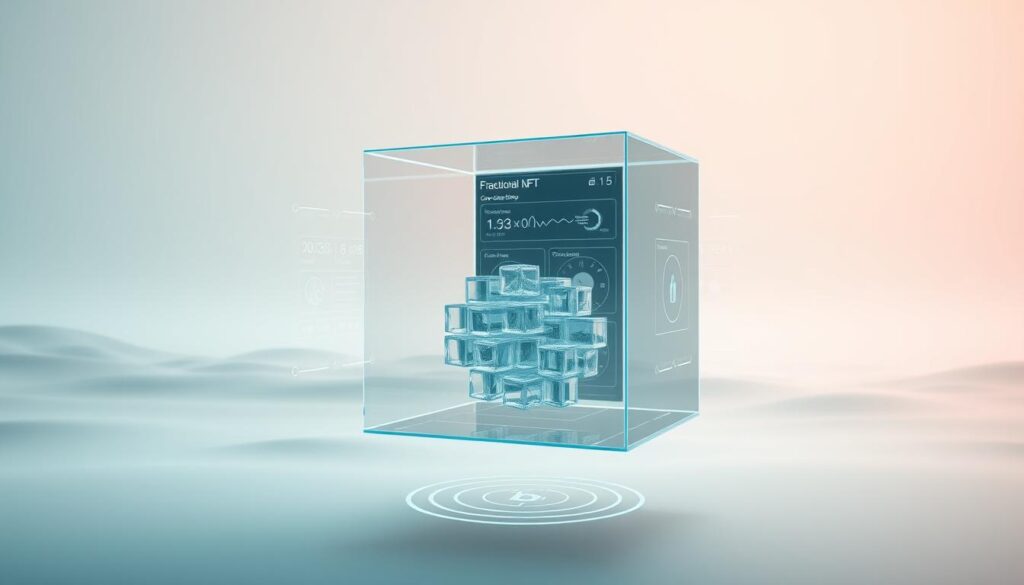Digital assets have taken the financial world by storm, sparking debates about their true worth. From Beeple’s $69 million artwork to multi-million-dollar CryptoPunk sales, these blockchain-based tokens grab headlines. But are they a smart choice for your portfolio?
The market has shifted since 2021’s frenzy. Today, projects focus on real-world uses like gaming and metaverse integration. Experts remain divided—some see long-term potential, while others warn of speculation.
This guide cuts through the noise. We’ll explore how ownership works, where value comes from, and whether these assets fit your goals. Ready to dive in?
Key Takeaways
- High-profile sales highlight the market’s volatility and potential.
- Utility-driven projects are gaining traction over speculative buys.
- Blockchain technology ensures secure ownership of digital assets.
- Experts offer conflicting views on long-term viability.
- Gaming and metaverse applications could drive future growth.
What Are NFTs and How Do They Work?
Imagine owning a one-of-a-kind digital item that no one else can copy or claim as theirs. That’s the promise of non-fungible tokens – unique digital certificates stored on a blockchain. Unlike dollars or Bitcoin where every unit is identical, each token has distinct properties that make it irreplaceable.
The Basics of Blockchain-Based Ownership
When you buy one of these tokens, the blockchain records your ownership permanently. Think of it like a digital deed that everyone can verify but no one can alter. Here’s how it works:
- Minting creates the token on networks like Ethereum or Solana
- Smart contracts automatically handle transfers when sold
- Your crypto wallet stores the proof of ownership securely
Popular examples include NBA Top Shot moments – digital basketball highlights you can collect and trade. The system cuts through traditional paperwork, making transfers instant and transparent.
How They Differ From Cryptocurrencies
While both use blockchain technology, there’s a key difference:
- Cryptocurrencies are fungible – one Bitcoin equals another
- Tokens are unique – no two CryptoPunks are identical
Newer platforms like Immutable X address energy concerns by using eco-friendly verification methods. Some services even let multiple people own fractions of high-value tokens, making them more accessible.
Whether representing digital art, concert tickets, or virtual land deeds, these tokens create new ways to establish and transfer ownership in our increasingly digital world.
NFT Investing: Hype or Real Opportunity?
From million-dollar sales to market crashes, the digital collectible space keeps everyone guessing. While some hail tokens as revolutionary, others see a bubble waiting to burst. Let’s break down both sides.
The Bullish Perspective
Brands like Gucci and Nike aren’t just dabbling—they’re building entire ecosystems around these assets. Limited-edition virtual sneakers and memberships show how digital scarcity creates perceived value. Even Christie’s now hosts curated auctions, signaling mainstream acceptance.
Art advisor Elena Georgiades argues:
“Tokenized art preserves provenance forever—something physical pieces can’t match.”
Meanwhile, BlackRock’s tokenized fund filings hint at growing institutional interest.
The Speculative Reality
Not all glitter is gold. Trading volumes dropped 97% since 2022, and Bored Ape prices fell 90%. Analyst Mark Johnson warns:
“Many projects thrive on FOMO, not fundamentals.”
Wash trading—fake sales to inflate prices—plagues unregulated markets.
Yet March 2024’s $16M CryptoPunk sale proves demand exists. The key? Projects with real-world utility, like property deeds on blockchain, outperform speculative profile pictures.
Younger generations prefer digital ownership, but whether this translates to lasting value remains unclear. The market’s next chapter will separate fads from fixtures.
The Pros of Investing in NFTs
Fractional ownership models now let anyone own a piece of high-value assets. These tokens remove traditional barriers, creating a more inclusive market. Whether you’re a student or seasoned collector, opportunities exist at every budget level.

Accessibility for Global Investors
Digital markets never close. Unlike stock exchanges with fixed hours, platforms like OpenSea process 2.5M ETH monthly across time zones. This benefits:
- International buyers avoiding currency conversions
- Part-time traders working outside 9-to-5 schedules
- Artists receiving instant global exposure
El Salvador’s adoption of blockchain policies shows how developing nations leverage this system for economic growth.
Fractional Ownership and Liquidity Benefits
Platforms like RealT split properties into affordable tokens. Their CEO notes:
“A $500 investment can now buy into prime real estate—something previously reserved for the wealthy.”
Nike’s .SWOOSH proves this works for retail too. Limited sneakers sell as tokens, with owners trading them like stocks.
Tamper-Proof Proof of Ownership
Blockchain records can’t be forged—unlike paper deeds or art certificates. Decentraland’s virtual LAND parcels demonstrate this:
- Smart contracts auto-update ownership during sales
- Royalty mechanisms ensure creators earn residuals
- No need for vaults like physical gold or artwork storage
Sotheby’s Metaverse auctions high-end tokens, trusting their permanent provenance records.
The Cons and Risks of NFT Investing
Behind the glitz of digital collectibles lies a landscape riddled with pitfalls. While headlines celebrate record sales, 80% of 2021 collections involved wash trading—fake transactions to inflate prices. Regulatory bodies like the SEC now scrutinize projects like Yuga Labs for potential securities violations.
When Markets Play Games
Pump-and-dump schemes thrive in unregulated spaces. Discord groups coordinate buying frenzies, then dump holdings on unsuspecting investors. The FTX collapse worsened liquidity, leaving many tokens stranded. Compare volatility:
| Asset Type | 30-Day Price Swing | Recovery Time |
|---|---|---|
| Blue-Chip NFTs | ±58% | 6-18 months |
| S&P 500 | ±8% | 3-6 months |
| Gold | ±3% | Weeks |
Fraud in the Digital Wild West
OpenSea reported $22M in stolen assets last year. Counterfeit Beeple works fooled buyers on new marketplaces. The Evolved Apes exit scam vanished with $2.7M after promising a video game. As SEC Chair Gary Gensler noted:
“Many platforms operate outside securities laws, creating investor hazards.”
Technical Minefields
SIM-swap attacks drained celebrity wallets despite blockchain’s security claims. Network congestion spikes gas fees unpredictably—one Bored Ape transfer cost $1,200 in ETH fees. Even Meta abandoned its marketplace, citing “evolving priorities.”
- Tax headaches: IRS treats tokens as property, requiring sale-by-sale calculations
- Copyright chaos: CC0 projects let anyone monetize artwork, sparking lawsuits
- Dead projects: 95% of collections lose all value within 3 years
Real-World NFT Applications Beyond the Hype
Beyond speculative trading, digital tokens are reshaping industries with tangible applications. From rewarding gamers to verifying luxury goods, blockchain technology is proving its worth outside market volatility. These innovations highlight how tokens create value in everyday contexts.
Gaming and Play-to-Earn Ecosystems
Axie Infinity’s $1.3B revenue in 2021 showed how gaming could monetize gameplay. Players earn tokens by breeding creatures or winning battles—a model adopted by STEPN’s move-to-earn sneaker apps. Warner Music Group’s Sandbox partnership lets fans attend virtual concerts, blending entertainment with ownership.
NBA Top Shot’s 3M+ users collect tokenized highlights, while Ticketmaster issues digital tickets as tradable assets. These examples prove tokens aren’t just collectibles—they’re tools for engagement.
Metaverse Real Estate and Virtual Assets
Decentraland’s $2.4B market cap stems from virtual real estate sales. Brands like Samsung host events in their metaverse stores, and artists tokenize gallery spaces. The Sandbox even lets you tokenize user-generated content, turning creativity into income.
Tokenizing Real-World Assets (RWA)
Miami’s luxury property market uses tokens for fractional ownership, cutting paperwork. Tiffany’s CryptoPunk pendants merge physical and digital value, while VeChain tracks pharmaceuticals via blockchain. Louis Vuitton’s authenticity tags and Walmart’s warranty patents show retail adoption.
Even education leverages tokens—MIT issues diploma assets, and carbon credits trade transparently. As industries embrace utility, the focus shifts from hype to real-world impact.
Conclusion
Tokens with real-world uses are outpacing speculative collectibles in today’s market. Projects tied to gaming, real estate, or memberships show more potential than profile-picture trends.
For investors, a 5-10% portfolio slice balances risk. Start on trusted platforms like Coinbase, and always research before buying. As analyst Dizon notes: “Tokens need utility to survive long-term.”
Store assets in cold wallets, and track IRS tax rules. The future favors hybrid physical-digital ownership—where value comes from function, not just hype.
FAQ
What makes blockchain-based ownership unique?
Blockchain technology ensures secure, transparent, and permanent records of ownership. Unlike traditional systems, it eliminates the need for intermediaries, giving you full control over your digital assets.
How are these tokens different from cryptocurrencies?
While cryptocurrencies like Bitcoin are interchangeable, each token is one-of-a-kind. They represent unique items, such as digital art or virtual real estate, with verified authenticity.
Why do some believe these assets are the future?
Supporters argue they revolutionize ownership by enabling direct transactions, fractional investments, and new revenue streams—especially in gaming, art, and virtual worlds.
What drives the prices of these digital items?
Prices often reflect speculation, rarity, and creator reputation. However, market trends and hype can cause rapid fluctuations, making valuations unpredictable.
Can anyone invest in these assets?
Yes! Global accessibility allows participation with just an internet connection. Some platforms even let you buy fractions of high-value items.
What are the biggest risks involved?
Volatility, scams, and unclear regulations pose challenges. Additionally, technical issues like wallet security can impact your holdings.
How is this technology used beyond art?
Gaming rewards, virtual land sales, and tokenized real-world assets (like property) are growing applications—blending digital and physical ownership.


